Art of The Cut by Steve Hullfish – An Editor’s Review
Buy The Art of The Cut on Amazon Global Stores
I’ve been a huge fan of Steve Hullfish‘s incredible, long running series of The Art of the Cut interviews on ProVideoCoalition.com for as long as they’ve been around.
They’re a rare opportunity to hear at length, and with in-depth granular detail, two experienced editors discussing the intricacies of their craft, careers and cutting rooms.
If you want to learn how to be a better editor, no matter where you are in your own development, then these interviews are required reading.
Each interview is packed with insights and available online for free, in their entirety.
So why should you buy the new book of the same interviews?
Because of the edit.
The ‘value add’ of the edit is taking the full extent of the raw materials, digging out the truly brilliant material and organising that into an accessible, engaging and entertaining final product.
This is precisely what Steve Hullfish has done with the book of The Art of The Cut – Conversations with Film and TV Editors.
In my email exchange with Steve for the interview (see below) he highlighted what was so startling about pulling the book together:
I personally conducted all of the interviews, then I personally transcribed most of the interviews, but it wasn’t until I saw them broken down into topics and edited into context that I realized the power of the book.
Even if you read every interview on PVC, you wouldn’t get the value that the book provides. It’s really eye-opening.
The inside cover of the book also sums it up well too:
Hullfish carefully curated over a a hundred hours of interviews, organising them into topics critical to editors everywhere, generating an extended conversation among colleagues.
The discussions provide a broad spectrum of opinions that illustrate both the similarities and differences in techniques and artistic approaches.
As an example of how this plays out, the chapter on how to Approach a Scene delivers, in just 32 pages, the wisdom of close to 40 editors including Stephen Mirrione (The Revenant), Joe Walker (Arrival), Margaret Sixel (Mad Max: Fury Road), Tom Cross (La La Land), Anne Coates (Erin Brockovich) and many more, on how they tackle the every day situation of watching rushes and building a scene for the first time.
My team puts everything together for the scene in a bin with all of the script notes – which I really rely on – then I watch the takes backwards.
I’ll watch until I see something I really like, and I’ll grab that and keep watching, and if theres something I like better, I’ll grab that…
It’s about finding a moment to respond to… watch all the dailies [and find the piece] that is the moment that is the anchor of the scene. – Stephen Mirrione
The book draws upon the interviews Steve has conducted with over 50 of the best editors working in film and television today. The list reads like a whose-who of the industry, many of whom have won the highest awards the industry has to bestow and many more have been nominated for the same.
To check out the full list of all 56 editors quoted in the book, head over to the Amazon ‘Look Inside’ feature here and scroll to the Film Editor Biographies section of the Kindle preview.
Other ‘interviews with editors’ books I’ve previously reviewed include books like First Cut and First Cut 2 by Gabriella Oldham, but these follow the person-by-person format, and not, a more helpful, topical chronology.
You really won’t find a similarly structured concentration of wisdom and insight, of this calibre, anywhere else.
* * * Win a copy of The Art of The Cut * * *
Thanks for the good people at Focal Press, you can win one of three copies of The Art of the Cut.
All you have to do is sign up to the free monthly newsletter (top right of the side bar) before May 1st 2017, and I will pick three winners at random!
* * *
Update – 5 More Chapters of Art of The Cut
The Routledge Textbooks companion website for The Art of The Cut has finally come online, with 5 free downloadable PDFs of further chapters, which are:
Anyone can download them for free, and you can hit the site or just use the direct download links above.
What’s in The Art of The Cut?
The book is comprised of 11 chapters listed below, with a further 5 bonus chapters available on the companion website which cover topics like editing VFX heavy films or discussions with the editors about cutting specific scenes (including video links).
- Project Organisation
- Approach to a scene
- Pacing and Rhythm
- Structure
- Storytelling
- Performance
- Sound Design
- Music
- Collaboration
- Documentary
- Miscellaneous Wisdom (Breaking in to the industry, handling the emotions, learning from mistakes etc.)
In addition to having ready access to the experiences of so many editors in one volume, the book also makes great use of it’s formatting, structure and layout to enhance the learning experience and make sure you take away some practical wisdom.
For example, the pull quotes highlight key ‘nuggets’ of wisdom and the side bars (not pictured here) provide dictionary definitions for terms that not every editor may be familiar with. The structure of the book also follows the general flow of the chronology of post production.
Each chapter is also set up with a comprehensive introduction to the topic at hand from Steve, which also makes this a valuable volume for students and teachers.
Although I, and every editor I know, already has their own preferred way of doing things, many of us are self-taught and so rarely get the opportunity to thoroughly look over the shoulder of another editor while they are working and see how they’re doing things.
Any time I have had that opportunity, I’ve always walked away with something I’ve later adopted as my own. Reading this book will provide something similar to that experience time and time again.
So if there is one new book that should be on every editor’s reading list, edit suite coffee table or home book shelf, it’s probably The Art of The Cut.
I’d wager that the next time you’re feeling a little ‘stuck’ with an edit, be that crafting a performance, interpreting a ‘note’ or wading through a river of rushes, a quick flick through the pages of this book will leave you both informed and inspired and ready to get back to it.
Buy The Art of The Cut by Steve Hullfish on Amazon
Read all the Art of The Cut interviews on Pro Video Coalition
Can't believe the book review I got from Oscar Nominee Dody Dorn, ACE!!! Wow! I got to interview her in person at NAB. Link to video soon… pic.twitter.com/Nf14DJmtlT
— Steve Hullfish (@SteveHullfish) April 27, 2017
Steve Hullfish on The Art of The Cut Book
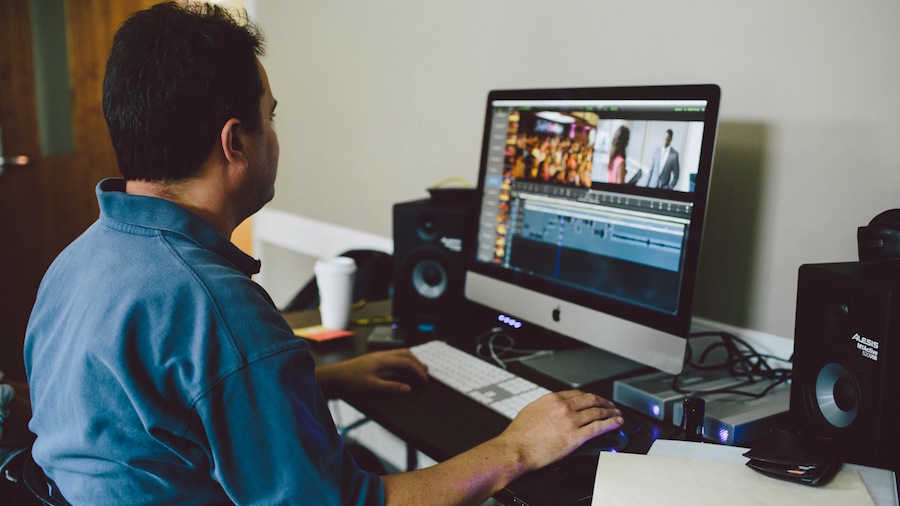
Steve Hullfish editing the feature film War Room
Steve was kind enough to take the time to answer a few of my questions about his latest book.
Previous titles from Steve include the excellent Avid Uncut, which I’ve previously reviewed here, and The Art of Digital Colour Correction which I’ve also previously reviewed here.
It’s also worth mentioning that over on Pro Video Coalition there is also a brilliant trio of articles, from Steve, on the entire post production process for a recent feature film he edited called War Room.
2018 Update – Tips from the World’s Best Editors
At the LumaForge Faster, Together NAB booth Steve shared the best tips he’s learned from interviewing 150 of the world’s best editors.
It’s crazy that he’s gone on to interview 90 further editors after The Art of The Cut was published. So here’s hoping there’s a 2nd edition!
Back to my original interview…
Having interviewed so many editors you must now have an encyclopaedic knowledge of the state of editors and the craft of editing in the industry today, not to mention from your own experience of sitting in the editing chair?
I definitely feel incredibly honored, privileged and blessed to be able to sit at the feet of editors I admire every week and ask the questions that I think we all want to know.
My own editing has definitely changed during the course of writing the book. Hopefully the readers of the book will get the same benefit from it.
The real value is to be able to see that there are many ways to do many things, and for the reader to evaluate the methods presented and make them their own.
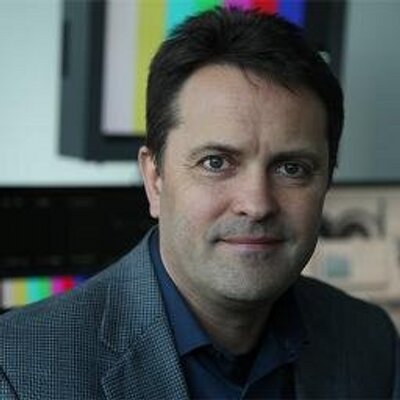
A less mysterious photo of Steve
What was your biggest take away from all of your interviews?
Honestly, that is a very personal question.
For me, I suffer a bit from impatience and ego. Many editors that I interviewed pointed out the poisonous danger of both of those in terms of the success of an individual project and also to my (and your) longterm career potential.
I always wanted to show the director that I can ALREADY see the problems and can fix them immediately – to show how clever or good I am at story, in particular.
But many editors pointed out that the director has to discover those same things during the iterative process that is editing. You can’t just say, “We can cut out the first half of this scene and it will be better.”
The director needs to see it the way they had envisioned, then they can come to their own conclusion – which might be EXACTLY the same as your original conclusion, but that doesn’t mean that doing it without letting the director come to their own determination is the right thing.
There’s no value in showing that you (the editor) are right. Your job is to serve the picture and the director.
Subvert your ego. Show some patience. Those were my two big takeaways.
What things have you changed about your own editing as a result of what you’ve learned from other editors?
Well, I definitely think I answered that in the above question. That’s the most fundamental change. But technically, one of the big ones is the way I organize scene bins.
I think Dan Zimmerman was the one who best articulated a way of laying out a scene in a bin – others use the same method – and at first I hated the idea. I respected that he liked it, but I didn’t see that I’d ever adopt it. Different horses for different courses, right?
But almost subconsciously I found that I have adopted his bin organization method which is very visual and has helped me in my initial approach to a scene.
Some other people mentioned a way of creating highly detailed selects reels that I have also adopted and not only makes it easier for me to wrap my head around a scene, but also helps me when reviewing options with a director.
I could describe the method, but I’d rather you buy the book and read it from the experts!
Was there anything that really surprised you in the process of compiling the book and revisiting the interviews?
I found it very interesting – when I had compiled enough interviews – that I could see threads and connections between editors who had worked together.
For example, an early Art of the Cut interview was with Eddie Hamilton. I learned some stuff about how he edits. Later, I interviewed someone else he’d worked with and that person does the same thing, then explained where he learned it, then I ended up interviewing THAT person and learned where she learned it… So I saw almost a “family tree” of editing ideas being passed from one editor to another, like a genetic code.
Who was the most fun to interview?
Honestly, I’ve interviewed Joe Walker three times – for 12 Years a Slave, Sicario and Arrival – and one time we got on Skype and talked for two hours like old pals.
He is such a wealth of knowledge and such a genuinely friendly and generous person. We were just joking and laughing and he seemed genuinely as interested in my process as I was in his.
Also, in the second interview he actually quoted something I said to him in the first interview that he claims he learned from me!
I don’t believe it for a second, but it sure made me feel like a million bucks that he remembered something I’d said 12 months earlier.
[Editors Note: Check out my in-depth making of Arrival post here, which features Steve’s original interview with editor Joe Walker.]Do you have a favourite chapter or moment in the book?
The Pacing chapter is my favourite.
Each chapter starts with a little essay kind of explaining the importance of the topic. The Pacing chapter probably has the best written essay, followed by some of the tightest and most fruitful interviews on any topic even though it’s one of the hardest to discuss.
My least favourite chapter is probably the first chapter on Project Organization because it’s a little dry, but it’s SO critical!!!
Almost every editor takes great pride in organizational skills and being a bit OCD (obsessive compulsive).
I felt I had to start the book with that chapter, but if you start reading the book and for some reason you get bogged down in the Project Management chapter, you don’t have to read it all in order. Just jump to the next chapter and come back.
It’s still got a ton of solid material in it, but it could be a bit shorter and I wish I could have put it at the end.
What do you think most editors don’t understand about editing films and TV at the highest level?
I think there’s a HUGE amount that most other filmmakers don’t understand about editing – including some directors. But editors?
At the highest level I think editors might not grasp the amount of social engineering and psycho-analysis that’s necessary. To be able to navigate the political waters of a film is – in some cases – very tricky, especially if you’ve got a director who’s at odds with one of the producers or the distributor.
You just need to be very politically aware and savvy. And you need to be very adaptive to the different working methodologies and nuances of how to treat different directors.
Do you think these successful editors are particularly gifted or is something else required – luck? Opportunity? Ambition? All three?
Luck and opportunity certainly play into it.
There’s a whole section on how these guys and gals are landing jobs. Some is being in the right place at the right time with the right gigs already under your belt.
Some is meeting an up and coming director at precisely the right moment. To me, talent in most of these editors is a given.
What separates most of them is that political ability that makes a director TRUST them and want to work for MONTHS on end. No other relationship on a film lasts as long as the director and editor (possibly director/producer).
The days are long. The situation can be very, very tense and difficult on some films and I think the people with great success are the ones that just make that director feel wrapped in a cocoon of safety and trust.
The editing room as a place of refuge was a common theme. If a director doesn’t want to hang out with you and like you personally, all the talent in the world is not going to help you get your next job.
Did you notice any particular personal attributes that were common to them all?
Work ethic, patience, a delicate balance of ego (based on their skills) and non-ego (based on submitting themselves to the director and the good of the project, everyone honestly seems very, very likable and nice, which goes back to that thing of having to be the person the director wants to hang out with for a year, passion.
This is your 6th book! Do you have any more planned?
Every time I write a book I swear I will never write another one.
I loved writing this book. I can’t wait to write the second edition with probably more than 100 editors instead of 50, but that won’t be for several years.
I’d love to do one like this book only with directors, but I’m worried that I don’t know enough to do the interviews.
One of the strengths of this book is that I am a working editor. I’ve cut feature films. I’ve cut TV. I know the problems I encounter. I know the questions that other editors will find intriguing. I know the best follow up questions from years of experience.
If I do the director book, I don’t know if I’ll be able to make it as good as this one is, but I’d love to try.
Also, I’m very much interested in seeing where Resolve is going with editing, so I might do a Resolve editing book (with a little colour correction thrown in for good measure.) I don’t know.
What do your readers think I should write a book about?
Hit the comments guys and share your thoughts on what Steve should write his next book about!

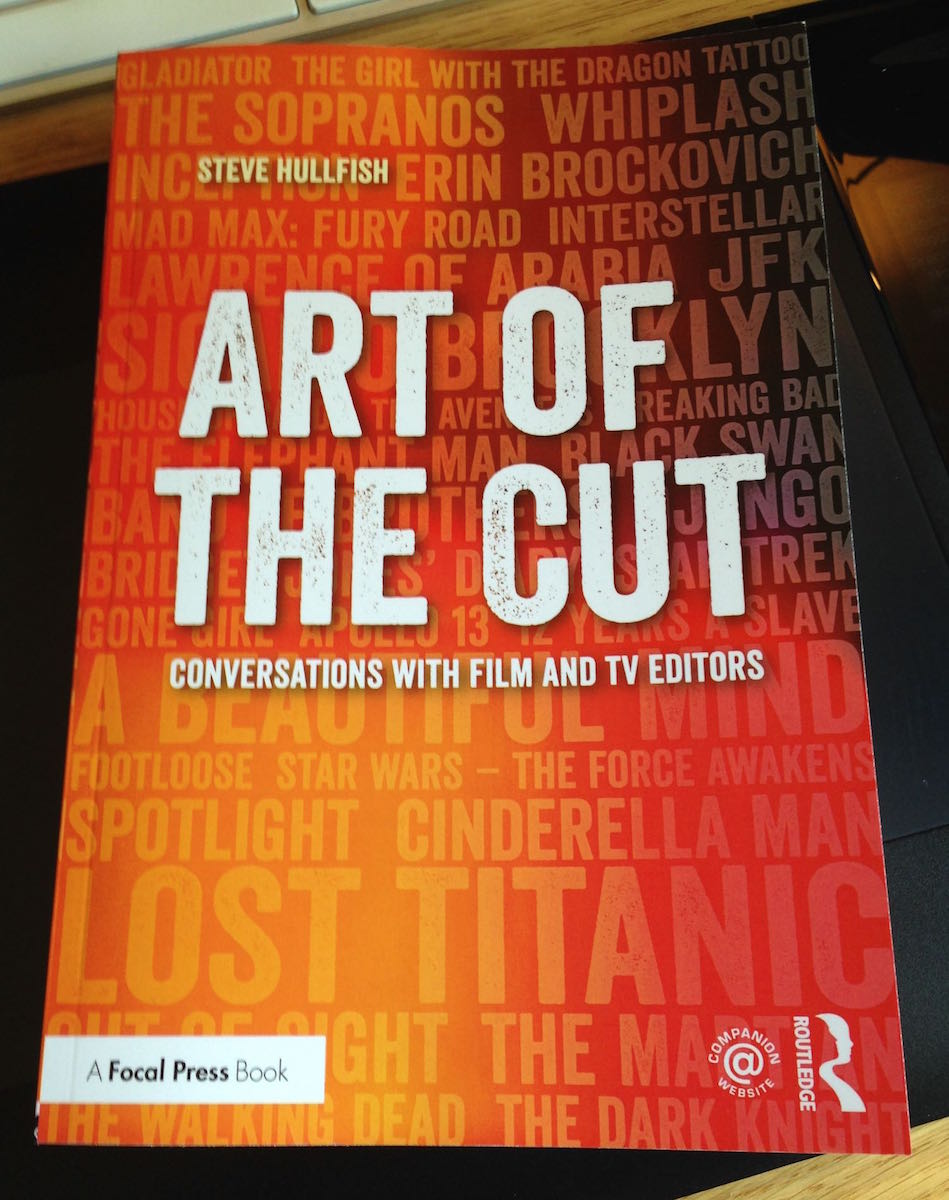
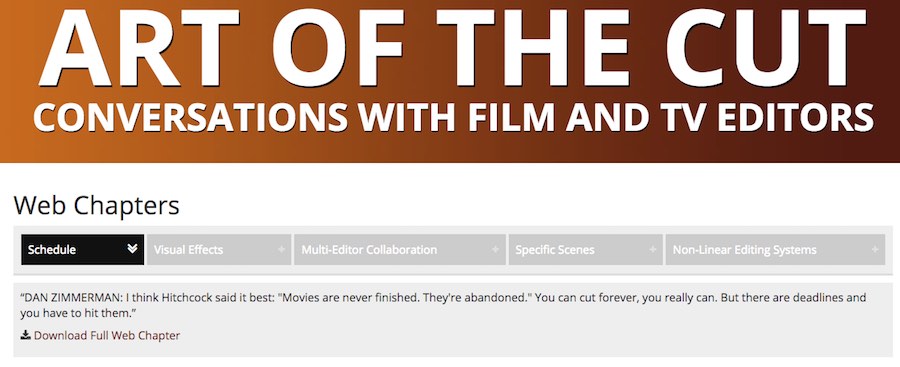
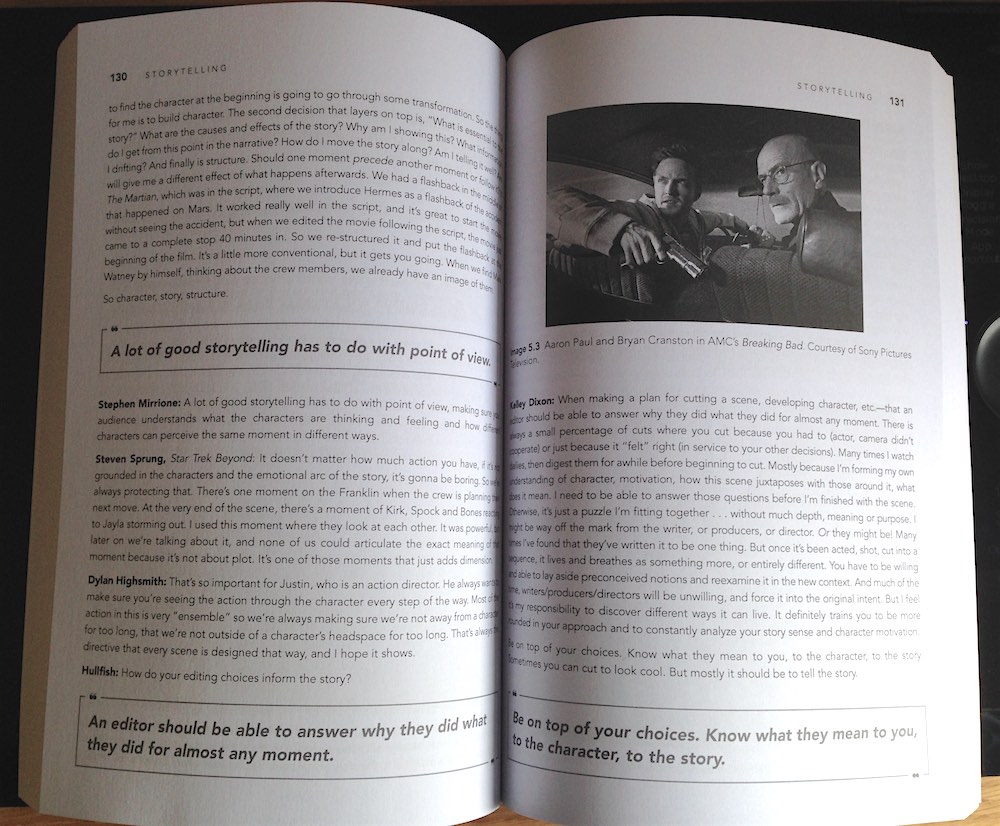
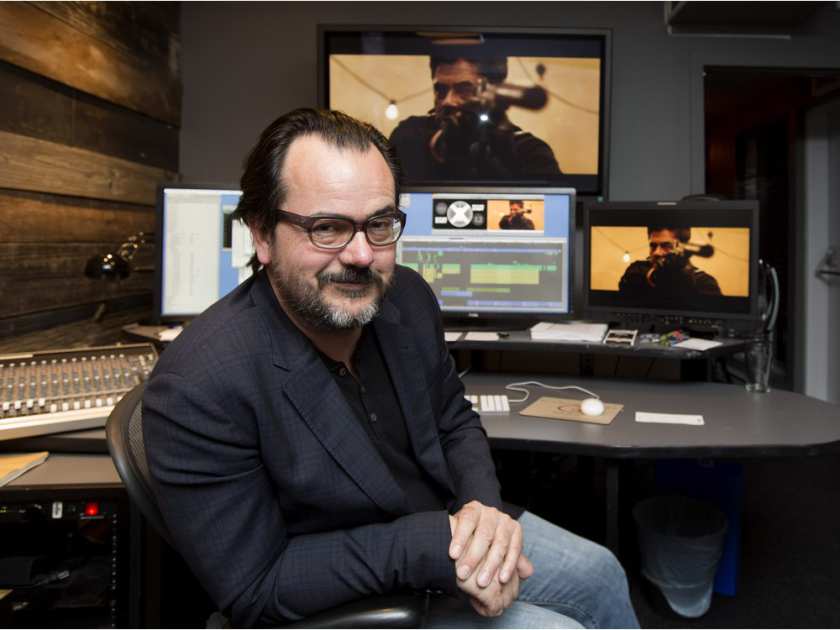




There are three interviews with assistant editors. Look for Cheryl Potter talking about assisting on The Martian, the assistants on Kingsmen: The Golden Circle and the assistant/associate editor on Dunkirk. See? Your wish is my command.
Hey Jonny!
Did you ever pick your winners of the copy of ‘Art of the Cut’?
I did. Sorry they’ve all been sent out already!
Hi Jonny,
Are those of us already signed up to the newsletter go into the draw as well?
Rgrds, Euan.
Indeed you are! I’ll pick three people at random from the full list.
Yes. My interview with assistant editor Cheryl Potter was one of the most popular in the series. I plan on doing more. Also the interview with Lion editor was setup by his assistant and he talks fondly of her invaluable assistance
I’d love to see some interviews with assistant editor’s, but the Directors book sounds so interesting. Great blog Jonny, looking forward to this book. Have signed up to the newsletter 🙂
Thanks Mary. The Art of the Cut does also feature answers from Cheryl Potter who assisted on The Martian.
Find out more about that here… http://jonnyelwyn.co.uk/film-and-video-editing/the-making-of-the-martian/
These other posts also feature interviews with assistants too… http://jonnyelwyn.co.uk/?s=assistant